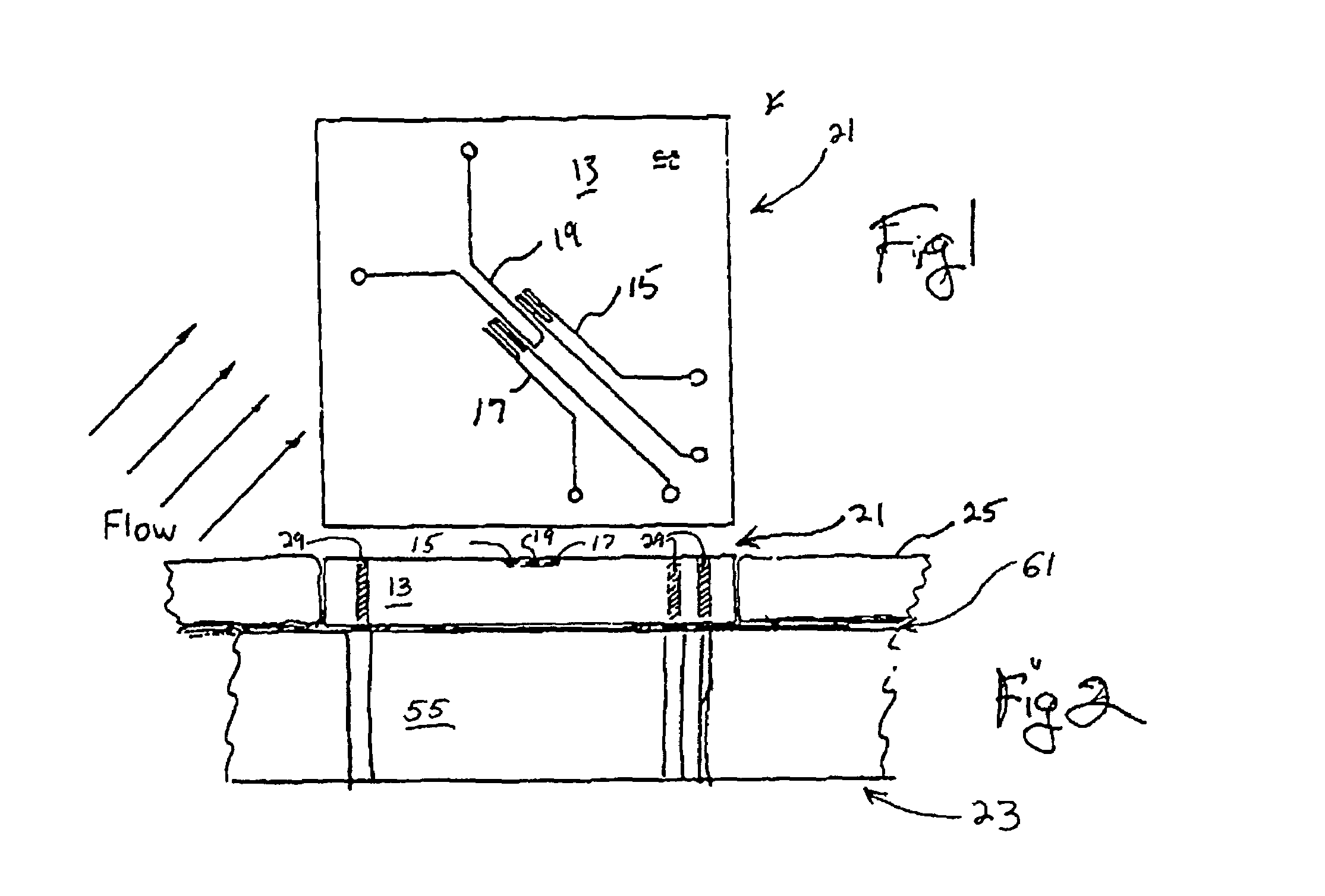Robust fluid flow and property microsensor made of optimal material
- Summary
- Abstract
- Description
- Claims
- Application Information
AI Technical Summary
Benefits of technology
Problems solved by technology
Method used
Image
Examples
Embodiment Construction
[0028]Throughout the Description of the Preferred Embodiment, like components will be identified by like reference numerals.
[0029]Referencing FIG. 1, a fluid flow sensor die 21 includes a body 13. Onto body 13 are deposited sensor elements 15, 17 surrounding a central heating element 19; all composed of a suitable metal, such as platinum. The arrangement and theory of operation for a microstructure fluid flow sensor of this type is known to those in the art and will not be further elaborated on herein. Again, for convenience sake, this structure will be generally referred to as a “flow sensor,” as indicated above.
[0030]Referencing FIG. 2, a flow sensor according to the present invention may include a microsensor die 21 bonded to a substrate 23 having a suitably matched coefficient of thermal expansion (CTE). Material for substrate 23 may include alumina, mullite, or known printed circuit board material having suitable CTE. A top surround body, or layer, 25 is placed on the substrate...
PUM
 Login to View More
Login to View More Abstract
Description
Claims
Application Information
 Login to View More
Login to View More - R&D
- Intellectual Property
- Life Sciences
- Materials
- Tech Scout
- Unparalleled Data Quality
- Higher Quality Content
- 60% Fewer Hallucinations
Browse by: Latest US Patents, China's latest patents, Technical Efficacy Thesaurus, Application Domain, Technology Topic, Popular Technical Reports.
© 2025 PatSnap. All rights reserved.Legal|Privacy policy|Modern Slavery Act Transparency Statement|Sitemap|About US| Contact US: help@patsnap.com



